-
 Bitcoin
Bitcoin $99,594.2189
-3.59% -
 Ethereum
Ethereum $2,188.5793
-9.00% -
 Tether USDt
Tether USDt $1.0001
-0.02% -
 XRP
XRP $1.9745
-5.82% -
 BNB
BNB $608.9511
-3.73% -
 Solana
Solana $130.4575
-5.93% -
 USDC
USDC $1.0000
0.01% -
 TRON
TRON $0.2637
-3.59% -
 Dogecoin
Dogecoin $0.1493
-5.97% -
 Cardano
Cardano $0.5322
-6.72% -
 Hyperliquid
Hyperliquid $33.9044
3.33% -
 Bitcoin Cash
Bitcoin Cash $449.6411
-5.46% -
 UNUS SED LEO
UNUS SED LEO $8.9629
0.43% -
 Sui
Sui $2.3943
-8.35% -
 Chainlink
Chainlink $11.4402
-7.83% -
 Stellar
Stellar $0.2241
-6.49% -
 Avalanche
Avalanche $16.1489
-4.24% -
 Toncoin
Toncoin $2.7182
-5.94% -
 Shiba Inu
Shiba Inu $0.0...01040
-5.72% -
 Litecoin
Litecoin $78.7882
-4.07% -
 Ethena USDe
Ethena USDe $1.0004
-0.01% -
 Hedera
Hedera $0.1305
-7.45% -
 Monero
Monero $297.0030
-5.32% -
 Dai
Dai $0.9997
-0.02% -
 Polkadot
Polkadot $3.1834
-6.03% -
 Bitget Token
Bitget Token $3.9788
-7.03% -
 Uniswap
Uniswap $6.1327
-10.62% -
 Pepe
Pepe $0.0...08689
-8.30% -
 Pi
Pi $0.4826
-9.65% -
 Aave
Aave $219.8043
-9.69%
How to read the DMI divergence pattern? What does a new high in price and a lower ADX mean?
A new high in price with a lower ADX signals weakening bullish momentum, hinting at a possible trend reversal; traders should watch for bearish DMI divergence to confirm.
May 24, 2025 at 10:10 am
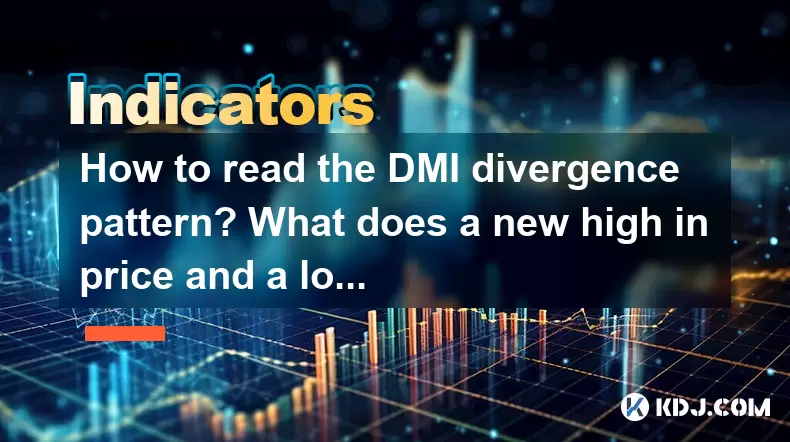
Introduction to DMI and ADX
The Directional Movement Index (DMI) and the Average Directional Index (ADX) are technical indicators used in the cryptocurrency market to gauge the strength of a trend and to identify potential reversals or continuations. The DMI consists of two lines: the Positive Directional Indicator (+DI) and the Negative Directional Indicator (-DI). The ADX, on the other hand, is derived from these two lines and measures the strength of the trend without indicating its direction.
Understanding the DMI divergence pattern is crucial for traders looking to make informed decisions based on market momentum. A divergence pattern occurs when the price movement of a cryptocurrency and the DMI or ADX show conflicting signals, suggesting a potential change in market direction.
What is DMI Divergence?
DMI divergence happens when the price of a cryptocurrency and the DMI indicators move in opposite directions. There are two types of DMI divergence: bullish divergence and bearish divergence. Bullish divergence occurs when the price of the cryptocurrency makes a lower low, but the +DI makes a higher low. This indicates that the downward momentum is weakening, and a reversal to the upside may be imminent. Bearish divergence is the opposite, where the price makes a higher high, but the -DI makes a lower high, suggesting that the upward momentum is waning and a downward reversal could follow.
How to Read the DMI Divergence Pattern
To effectively read the DMI divergence pattern, follow these steps:
- Identify the trend: Start by identifying the current trend using the +DI and -DI lines. If the +DI is above the -DI, the trend is considered bullish, and vice versa for a bearish trend.
- Monitor price action: Pay close attention to the price action of the cryptocurrency. Look for significant highs and lows that can be used to compare with the DMI indicators.
- Compare price and DMI: Compare the price movements with the corresponding movements of the +DI and -DI. If the price is making a new high but the +DI is not following suit, or if the price is making a new low but the -DI is not, you may be witnessing a divergence.
- Confirm with ADX: Use the ADX to confirm the strength of the trend. A rising ADX indicates a strengthening trend, while a falling ADX suggests a weakening trend.
What Does a New High in Price and a Lower ADX Mean?
When the price of a cryptocurrency reaches a new high but the ADX is lower, it suggests a weakening trend. A new high in price with a lower ADX indicates that the bullish momentum is not as strong as it was during previous highs. This scenario can be a warning sign for traders, as it may signal that the current uptrend is losing steam and a potential reversal could be on the horizon.
To interpret this situation effectively, consider the following:
- Trend strength: The lower ADX implies that the trend strength is diminishing. Even though the price is reaching new highs, the lack of strong directional movement suggests that the bullish momentum is not supported by a robust trend.
- Potential reversal: A lower ADX alongside a new high in price can often precede a price reversal. Traders should be cautious and look for other confirming indicators, such as bearish divergence in the DMI, to validate this potential reversal.
- Trading strategy: In such cases, traders might consider taking profits on long positions or preparing for a potential short position if other indicators align with the weakening trend.
Practical Example of DMI Divergence and ADX
Let's walk through a practical example to illustrate how to read the DMI divergence pattern and interpret a new high in price with a lower ADX.
- Scenario: Suppose the price of Bitcoin reaches a new high of $50,000, but the ADX has been declining from 30 to 20 over the same period.
- DMI Analysis: At the same time, the +DI is making lower highs while the price is making new highs, indicating a bearish divergence.
- Interpretation: The bearish divergence in the DMI, coupled with the declining ADX, suggests that the bullish trend is weakening. Even though the price is reaching new highs, the momentum behind the trend is not as strong as it was previously.
- Action: Traders might consider this a signal to take profits on long positions or to prepare for a potential short position if other bearish indicators confirm the weakening trend.
Using DMI and ADX in Trading Strategies
Incorporating DMI and ADX into trading strategies can enhance a trader's ability to make informed decisions. Here are some ways to use these indicators effectively:
- Trend following: Use the ADX to confirm the strength of the trend. A rising ADX can validate a decision to enter a trade in the direction of the trend, while a falling ADX might suggest waiting for a clearer signal.
- Divergence trading: Look for bullish or bearish divergences in the DMI to identify potential reversal points. Combine these signals with the ADX to assess the strength of the potential reversal.
- Risk management: Use the DMI and ADX to manage risk by setting stop-loss orders based on the strength of the trend and the presence of divergence signals.
Frequently Asked Questions
Q: Can DMI divergence be used as a standalone indicator for trading decisions?
A: While DMI divergence can provide valuable insights into potential trend reversals, it is generally more effective when used in conjunction with other technical indicators and analysis methods. Relying solely on DMI divergence might lead to false signals, so it's crucial to confirm divergence signals with other indicators such as the ADX, RSI, or MACD.
Q: How often should I check the DMI and ADX indicators?
A: The frequency of checking the DMI and ADX depends on your trading style. For day traders, checking these indicators multiple times throughout the trading day is advisable. Swing traders and long-term investors might find it sufficient to check these indicators on a daily or weekly basis to align with their trading timeframes.
Q: What is the ideal timeframe for using the DMI and ADX indicators?
A: The ideal timeframe for using the DMI and ADX indicators varies based on the trader's strategy. For short-term trading, such as scalping or day trading, using shorter timeframes like 5-minute or 15-minute charts can be effective. For swing trading, daily charts are commonly used, while long-term investors might prefer weekly or monthly charts to assess broader trends.
Q: Can the DMI and ADX be used effectively in highly volatile markets?
A: Yes, the DMI and ADX can be particularly useful in highly volatile markets. These indicators help traders identify the strength of trends and potential reversals, which are common in volatile conditions. However, traders should be cautious and use additional confirmation tools due to the increased likelihood of false signals in such environments.
Disclaimer:info@kdj.com
The information provided is not trading advice. kdj.com does not assume any responsibility for any investments made based on the information provided in this article. Cryptocurrencies are highly volatile and it is highly recommended that you invest with caution after thorough research!
If you believe that the content used on this website infringes your copyright, please contact us immediately (info@kdj.com) and we will delete it promptly.
- Altcoins Under Pressure: Cardano and XRP Face Critical Tests
- 2025-06-23 12:25:12
- Rare Coin Fever in Wiltshire: Auctions, Errors, and Olympic Gold!
- 2025-06-23 12:25:12
- XRP Price Under Pressure: War Fears and Market Sentiment
- 2025-06-23 12:30:12
- HAI Token Private Key Leak: What Happened and How to Stay Safe
- 2025-06-23 12:45:12
- Texas Goes All In: Bitcoin Reserve Signals Big State Embrace
- 2025-06-23 12:45:12
- Pi Network's Price Plunge: Crash, Scammer Accusations, and What's Next?
- 2025-06-23 13:05:12
Related knowledge
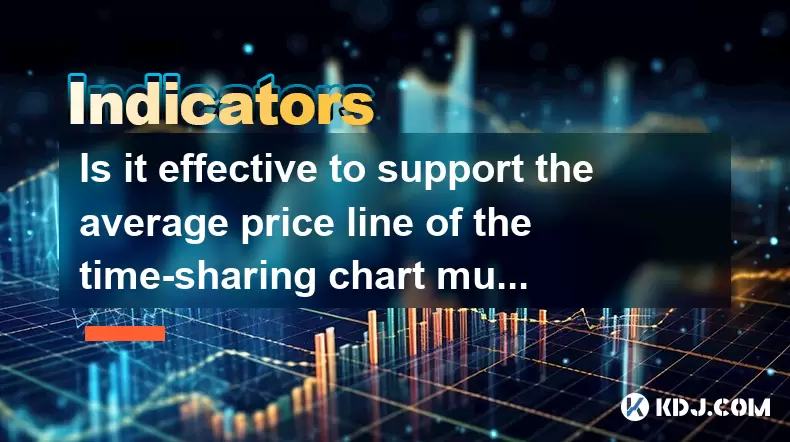
Is it effective to support the average price line of the time-sharing chart multiple times?
Jun 23,2025 at 01:36pm
Understanding the Average Price Line in Time-Sharing ChartsIn cryptocurrency trading, time-sharing charts refer to real-time price charts that display price movements over short intervals, often within a single trading day. Within these charts, the average price line, also known as the Volume Weighted Average Price (VWAP), is a commonly used technical i...
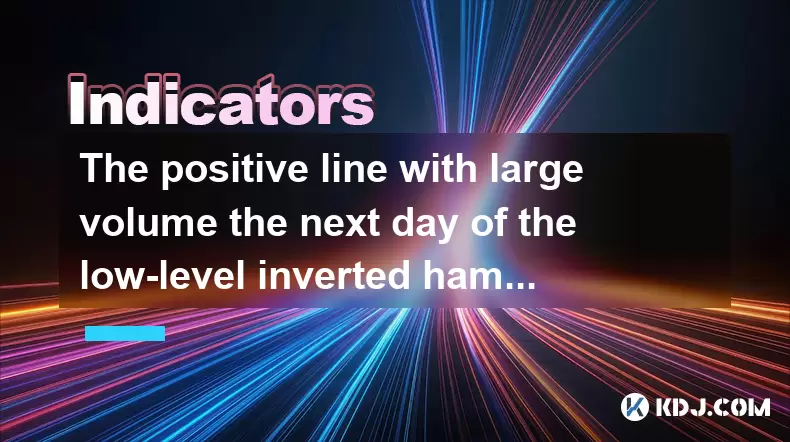
The positive line with large volume the next day of the low-level inverted hammer line confirms the reversal?
Jun 23,2025 at 01:21pm
Understanding the Low-Level Inverted Hammer LineThe inverted hammer line is a single candlestick pattern that typically appears at the end of a downtrend. It has a small real body near the bottom of the trading range and a long upper shadow, indicating that bulls attempted to push prices higher but were met with selling pressure. When this pattern forms...
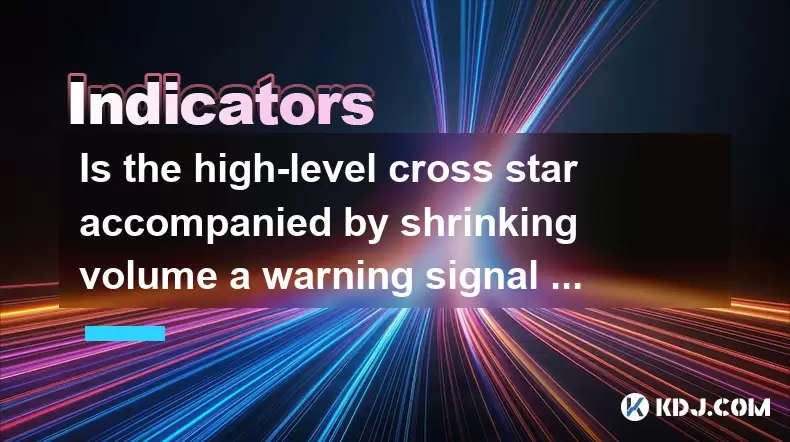
Is the high-level cross star accompanied by shrinking volume a warning signal of peaking?
Jun 23,2025 at 01:28pm
Understanding High-Level Cross Star PatternsIn the world of cryptocurrency trading, candlestick patterns are essential tools for technical analysis. One such pattern is the high-level cross star, which appears as a doji or near-doji candle at a significant resistance level. This pattern often indicates indecision in the market and can be interpreted as ...
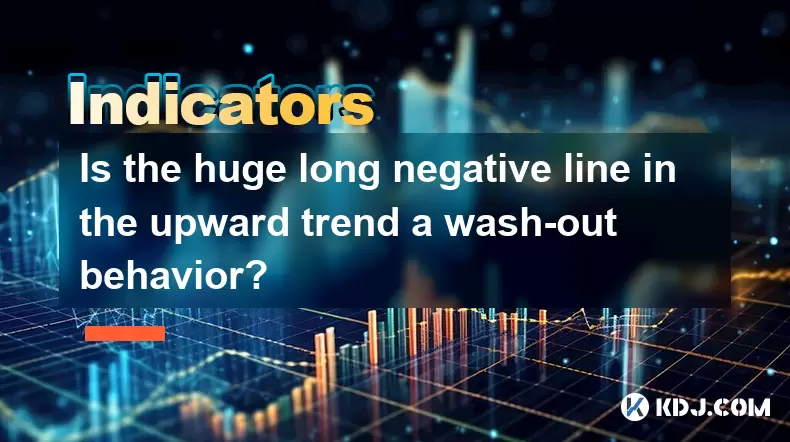
Is the huge long negative line in the upward trend a wash-out behavior?
Jun 23,2025 at 12:49pm
Understanding the Long Negative Candlestick in an Uprising TrendA long negative candlestick, often referred to as a long red or bearish candle, appearing during an upward trend can raise concerns among traders and investors. This pattern typically indicates a sudden and significant drop in price after a period of rising prices. It is often interpreted a...

Can the EXPMA golden cross stand on the 5-day line at the same time?
Jun 23,2025 at 11:42am
Understanding the EXPMA Indicator in Cryptocurrency TradingThe Exponential Moving Average (EXPMA) is a popular technical analysis tool used by cryptocurrency traders to identify trends and potential reversal points. Unlike simple moving averages, the EXPMA gives more weight to recent price data, making it more responsive to current market conditions. In...

Does the second surge in the RSI overbought zone induce more?
Jun 22,2025 at 08:35am
Understanding the RSI Overbought ZoneThe Relative Strength Index (RSI) is a momentum oscillator commonly used in technical analysis to measure the speed and change of price movements. It ranges from 0 to 100, with values above 70 typically considered overbought and values below 30 considered oversold. When the RSI enters the overbought zone for the firs...

Is it effective to support the average price line of the time-sharing chart multiple times?
Jun 23,2025 at 01:36pm
Understanding the Average Price Line in Time-Sharing ChartsIn cryptocurrency trading, time-sharing charts refer to real-time price charts that display price movements over short intervals, often within a single trading day. Within these charts, the average price line, also known as the Volume Weighted Average Price (VWAP), is a commonly used technical i...

The positive line with large volume the next day of the low-level inverted hammer line confirms the reversal?
Jun 23,2025 at 01:21pm
Understanding the Low-Level Inverted Hammer LineThe inverted hammer line is a single candlestick pattern that typically appears at the end of a downtrend. It has a small real body near the bottom of the trading range and a long upper shadow, indicating that bulls attempted to push prices higher but were met with selling pressure. When this pattern forms...

Is the high-level cross star accompanied by shrinking volume a warning signal of peaking?
Jun 23,2025 at 01:28pm
Understanding High-Level Cross Star PatternsIn the world of cryptocurrency trading, candlestick patterns are essential tools for technical analysis. One such pattern is the high-level cross star, which appears as a doji or near-doji candle at a significant resistance level. This pattern often indicates indecision in the market and can be interpreted as ...

Is the huge long negative line in the upward trend a wash-out behavior?
Jun 23,2025 at 12:49pm
Understanding the Long Negative Candlestick in an Uprising TrendA long negative candlestick, often referred to as a long red or bearish candle, appearing during an upward trend can raise concerns among traders and investors. This pattern typically indicates a sudden and significant drop in price after a period of rising prices. It is often interpreted a...

Can the EXPMA golden cross stand on the 5-day line at the same time?
Jun 23,2025 at 11:42am
Understanding the EXPMA Indicator in Cryptocurrency TradingThe Exponential Moving Average (EXPMA) is a popular technical analysis tool used by cryptocurrency traders to identify trends and potential reversal points. Unlike simple moving averages, the EXPMA gives more weight to recent price data, making it more responsive to current market conditions. In...

Does the second surge in the RSI overbought zone induce more?
Jun 22,2025 at 08:35am
Understanding the RSI Overbought ZoneThe Relative Strength Index (RSI) is a momentum oscillator commonly used in technical analysis to measure the speed and change of price movements. It ranges from 0 to 100, with values above 70 typically considered overbought and values below 30 considered oversold. When the RSI enters the overbought zone for the firs...
See all articles

























































































